Martin Edwards's Blog, page 64
January 12, 2022
Elizabeth Harvest - 2018 film review

I was tempted to watch Elizabeth Harvest, a film I'd never heard of, by the presence in the cast of Ciaran Hinds, who made a great impression on me with his performance in that excellent series The Terror. Here he plays a very different character in a very different type of story, which fuses crime, sci-fi, and horror. It's an odd film, to say the least. Some commentators have understandably highlighted the parallels with the Bluebeard story, but I think that writer-director Sebastian Gutierrez was trying to do something fresh with the raw material.
The story seems at first to follow a very familiar pattern. A beautiful young woman, Elizabeth, has just married a much older man, the very wealthy Henry (Hinds) who is a brilliant scientist. He takes her to his very ritzy home, and she meets the gorgeous housekeeper Carla (Claire Gugino) and Henry's blind son Oliver (Matthew Beard, who played Max Lieberman in Vienna Blood). There is, however, a locked door to a mysterious room. Henry tells his new bride that this is the one bit of the house she is not allowed to enter. Oh dear. Guess what she wants to do?
Elizabeth does indeed make it her business to enter the locked room, and surprise, surprise, makes a gruesome discovery. So far, so predictable. But now the story takes an unexpected turn and we find that, rather than watching a formulaic horror movie, we're involved with something more ambitious and distinctly stranger.
Elizabeth is played by Abbey Lee, who I gather is (and I can believe it) a super-model. It seems to me that one of Gutierrez's key preocuppations in this film is beauty. Everyone and everything seems rather glamorous, but also has a dark side. The story is serpentine, but on the whole I didn't find it as emotionally engaging as it should have been. A bit less glamour and a bit more pace wouldn't have gone amiss. The Terror was subtler and much more memorable.
January 10, 2022
The Dry - 2020 film review
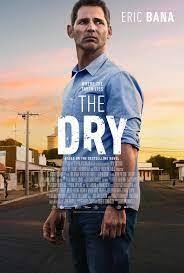
Jane Harper's debut novel The Dry won a CWA Gold Dagger and has been much praised for its evocation of the Australian outback during a drought. It's interesting to note that Jane Harper was actually born in Manchester, better known for rain than the lack of it, but she moved to Australia as a child, and after a number of years back in England, returned there some years ago. So she knows the country very well indeed.
The recent film of her novel, directed by Robert Connolly, captures the landscape nicely and handles numerous flashback scenes pretty well. Essentially this is a story about two mysteries, one from the distant past, one in the present. The connecting link is detective Aaron Falk, who returns to his home town after many years of absence.
Falk (well played by Eric Bana) goes back to attend the funeral of an old friend, Luke, after a devastating domestic tragedy. Luke is presumed to have killed his wife and child and then committed suicide. But the dead man's parents can't believe he was capable of such an atrocity and Aaron feels compelled to investigate.
A complication is that Aaron and Luke were associated with the death of a female friend when they were all teenagers, and it soon becomes clear that some of the locals don't want Aaron back in town. But he stays on, teaming up with a likeable local cop, and turning over plenty of stones as he searches for the truth and a sort of personal redemption. The film moves rather slowly at times, but overall it's a rewarding story, well-written and well acted.
January 7, 2022
Forgotten Book - Touchdown
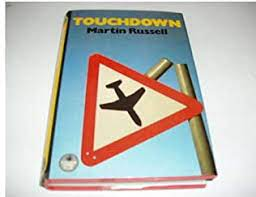
Martin Russell was a very well-established author by the time he published Touchdown in 1979. In that year, he was elected to membership of the Detection Club. He'd also been involved with the Crime Writers' Association for a number of years. He'd written series novels, featuring the journalist Jim Larkin, and numerous stand-alones. Yet I can't trace any discussion of Touchdown anywhere. If there's anything I've overlooked, I hope that eagle-eyed readers of this blog will let me know.
Touchdown is an unusual novel which in many ways encapsulates Russell's strengths and also certain shortcomings. It's definitely a book which moves in a direction that is totally unexpected - at least I didn't expect it! And because of the Big Twist, it's hard for me to comment in any detail without spoilers. But let me give you a flavour.
The story opens with Julian Phillips at an airport. It's a relatively small airport, somewhere in the provinces. The place is quiet...too quiet, as the old cliche goes. We gather that Julian is waiting for a plane to land and that one of the passengers is his wife Angela. But there's something odd and unsettling about the whole situation.
It starts to look as though some monstrous conspiracy is taking place. Has the airport been taken over by some malign force? We also learn about troubles in Julian's private life and his affair with a much younger woman. For some time I felt that this read more like the script for a routine TV thriller than a Collins Crime Club novel, with all the action compressed into a few short hours and an absence (or so I thought for most of the book) of dramatic plot developments - it all seemed to be build-up rather than delivery. However, Russell certainly bamboozled me with his later revelations. Did I find them altogether convincing? I'm not sure I did. This is partly because I never really warmed to Julian and partly because the sense of terror that Russell tries to work up needed more evocative prose, something more in the Cornell Woolrich vein. But Touchdown is a clever story and like its author it deserves to be better known.
January 5, 2022
Murder Mystery - 2019 film review
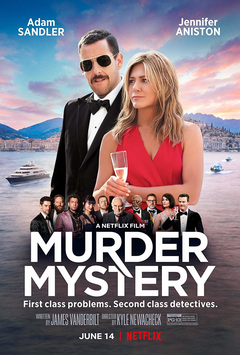
I tend to think that any film titled Murder Mystery ought to offer a definitive take on the crime story. The 2019 movie of that name starring Jennifer Aniston certainly fails that test, but as light entertainment, it's perfectly acceptable. James Vanderbilt's script has a number of enjoyable moments, and the storyline - whilst hardly at the Christie level of ingenuity - is just about acceptable, as long as you don't think too much about the various plot holes. But then, it's not the sort of film you should think about too much.
Nick Spitz (Adam Sandler) is a not very competent New York cop married to a likeable hairdresser and mystery fan called Audrey (Aniston), who has always wanted to visit Europe. For their fifteenth anniversary, Nick finally gets round to booking a coach trip. On the plane, while Nick is asleep, Audrey is chatted up by wealthy Charles Cavendish (Luke Evans). On a whim, Cavendish invites the Spitzes to join him on his luxury yacht in the Med. I rather expected there to be a cunning explanation for this act of generosity - but there wasn't, an example of weak writing, I'm afraid.
The Spitzes find that they have joined a family celebration. Cavendish's elderly uncle Malcolm Quince (a great role for Terence Stamp) is about to marry Cavendish's former lover (Shiori Kutsuna) and the party also includes a variety of other people with good reason to wish Quince dead - at least before he can leave his fortune to his new wife. The cast is nicely varied, and includes Gemma Arterton and David Walliams.
Needless to say, Quince is murdered, and another death soon follows. When the yacht lands at Monte Carlo, the detective in charge concludes, on the basis of no evidence whatsoever, that the Spitzes are the culprits. This was the weakest part of the script, a contrivance that is quite inept. But compensation comes in the form of quite a few funny lines as the story wanders towards an unlikely conclusion.
January 1, 2022
A New Year - Time to Look Ahead

As a year draws to a close, it's good to look back and I enjoyed compiling my the other day. But now it's a new year, and time to look forward. Many things remain uncertain, but I'm full of hope and optimism. All being well, it promises to be a bumper year. And for those making new year resolutions about writing that first crime novel, Dea of Fiction Feedback and I hope that they will be tempted by the !
My new Rachel Savernake novel comes out in September. This latest example of Golden Age Gothic is called Blackstone Fell, and I'll talk more about it in due course. But I guess the main event so far as some readers are concerned will be the publication in May by HarperCollins of The Life of Crime, my history of the mystery genre. Suffice to say that it's a very substantial book, and it ranges far and wide. So there's quite a lot about Golden Age writing (of course) but also a good deal about such diverse subjects as Japanese mystery fiction, Vidocq and his followers, William Lindsay Gresham, and Ian Fleming. I've no idea how the book will be received, but I'm excited about the prospect of seeing it in print at last, because I've been thinking about the material for many a long year and actively writing it for the past five or six.

There will be overseas editions of several of my books in a number of countries, including China, Italy, and (this one has been delayed for a while, but may finally emerge in 2022) Bulgaria. One to mention specifically, because it involves an unexpected title change, is the US edition of The Crooked Shore. This will appear in the summer as The Girl They All Forgot. I'm very pleased that Poisoned Pen and Sourcebooks, the publishers, are treating this as a potential breakthrough title for me in the States - hence the very different style of cover artwork.
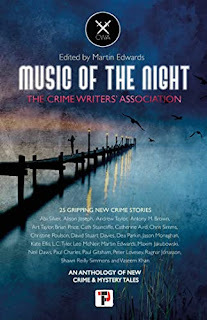
My first anthology of the year will be Music of the Night, a collection of brand new stories by members of the CWA; my own contribution is a piece called 'The Crazy Cries of Love'. In the spring, the British Library are publishing an anthology of classic Scottish crime stories, The Edinburgh Mystery. There might be one more anthology later in the year, but that is uncertain. As regards the BL Crime Classics, I've already penned intros to quite a number of the titles for 2022, including books by Christianna Brand, Anthony Berkeley, ECR Lorac, and John Dickson Carr.
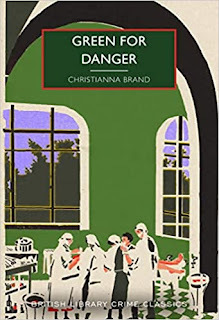
Short stories of mine will appear in various other publications. My Cornell Woolrich tribute story, 'The Woman Who Never Was', is slated to appear in an antho edited by Maxim Jakubowski, with 'No Peace for the Wicked' due to feature in Ellery Queen's Mystery Magazine. I've written another couple of stories for American anthologies that are yet to be publicly announced, including a Golden Age homage, 'The Outsider', which was a lot of fun to write.
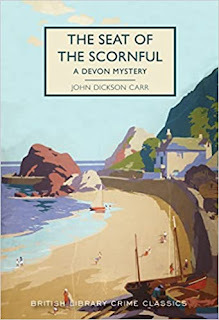
Now for something almost completely different - a Golden Age Mystery Map of Britain! I signed a contract recently to produce the text for this venture and I was working on it in December - another fun thing to do. More details soon. At present I'm thinking about an even more unlikely project (definitely ambitious) as well; whether anything will come of it, however, remains to be seen. Suffice to say it involves both Golden Age detective fiction and sci-fi...

At present, I'm booked to appear at numerous festivals, in England, in Wales, and in Scotland and I'm really looking forward to getting around a bit more. I'm also very much hoping to make it to Bouchercon, although right now, it's hard to look too far into the future. As for the blog, I expect it to keep rolling on as before. I hope to have opportunities to meet more of my readers in Britain and elsewhere during 2022, but in the meantime may I simply wish you all a very happy new year.
December 31, 2021
Forgotten Book - Scandalize My Name
For my last forgotten book of 2021, something a little out of the ordinary. I imagine the name of Fiona Sinclair will be unknown to most readers of this blog, as it was unknown to me until I picked up an inscribed copy of her first novel, Scandalize My Name, which was published in 1960. Even then, I didn't get round to reading it for quite some time, though I did manage to lay my hands on another couple of her books.
Having now read it, I've become a Fiona Sinclair fan. This detective story remind me quite strongly of the early P.D. James, and even her Oxford-educated cop, Grainger, is similar in some respects to Adam Dalgliesh. He doesn't write poetry (although his creator did), but he too has lost his wife, and is a thoughtful, decent man with a strong moral compass.
When I read the opening pages, I wasn't quite sure I was going to enjoy this book. Too many people were introduced too quickly and there were one or two touches which made clear that the author was relatively inexperienced. But soon I was drawn in by the sheer quality of the writing. In his review in The Guardian, Francis Iles said that she overdid the purple passages and the dialect and I agree on both points, but he also admired Sinclair's promise and potential and I think he was spot on. This is a chilling story about the murder of a blackmailer, with a neatly composed pool of prospective suspects. I did figure out whodunit early on, perhaps again because of the author's inexperience, but this didn't mean that I failed to admire the overall quality of the book. There are some indications that it was written, or at least set, in about 1955-56 rather than 1960.
Fiona Sinclair was an actress who was married to a doctor (as was Phyllis James). Tragically, however, she died the year after this book was published and my understanding is that she took her own life at the age of 42. More than that, I don't know. But what I do know is that she had a genuine talent for crime writing and it is very sad that she didn't live long enough to develop her natural storytelling gifts in the way that Phyllis did.
December 29, 2021
Looking Back at 2021

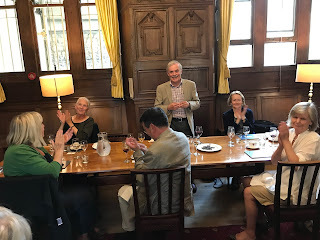
Thanks so much to you, the readers of my blog, for following my posts during the past twelve months. 2021 has been a strange year for almost all of us. On Christmas Eve, I was taking my daily walk (something I've done ritualistically for the past two years, even before the pandemic struck) ruminating on an irritating email when I bumped into a couple I've known for around 25 years. The husband, who is about my age, told me he's suffering from a brain tumour. The courage he's showing made me feel remorseful about my grumpy reaction to that email. A reminder that it's so important to concentrate on appreciating the good things in life while one can. And despite being unable, again, to see many friends in person, there have at least been plenty of those good things over the past year.
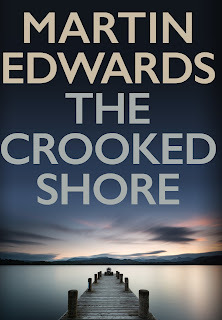
This year saw the UK publication of The Crooked Shore, the eighth Lake District Mystery, but the first for six years. The break seems to have done me good - the reviews in The Times and elsewhere have been terrific, which is especially rewarding given that this book is rather different in some ways from its predecessors. I hope this augurs well for the book's US publication next summer, under a different title.

This time last year, I never anticipated being commissioned by Otto Penzler of The Mysterious Bookshop to write a Bibliomystery for him. The result was The Traitor, a novella which was great fun to write (while visits to Llandudno and Shropshire in the first half of the year provided me with some of the settings). It introduces a 'book detective', Benny Morgan, who may return in the future. I don't have any specific ideas for Benny just yet, but he's a character with, I feel, plenty of potential. And I just heard from Otto this week that the story is shortly to be released on audio.
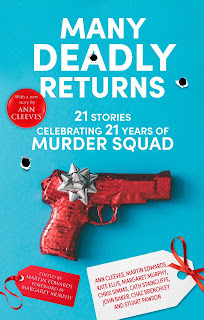
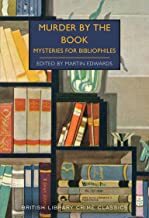

In terms of anthologies, I edited Many Deadly Return, celebrating Murder Squad's 21st anniversary, and including three stories of mine. The book's launch in Whitley Bay (see the photo above) was memorable, as well as providing a good reason for a few days in the north east. There were also two British Library collections, Guilty Creatures and Murder by the Book. Lee Child picked 'The Locked Cabin' for inclusion in The Best Mystery Stories of the Year 2021, while 'The Bookbinder's Apprentice' featured in Daggers Drawn.
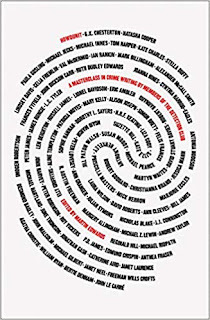

No overseas travel again this year. Not to worry: I took the decision after the very first lockdown to take any opportunities that were presented for travel within Britain and I found these trips extremely thereapeutic and rewarding in all sorts of ways. Quite apart from the trip to Northumberland and its environs, I spent time in North Wales, the Wye Valley, Harrogate, Ely and the Fens, the Lake District and Derbyshire. There were lovely boat trips in Ely, at Symonds Yat, and around the Farne Islands, plus a steam railway journey through eastern Kent.

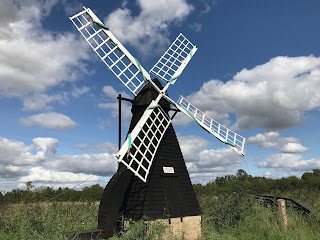
This year, unlike last, I also managed to take part in live festivals - at Buxton, Rye (see the photo below with Elly Griffiths, Andrew Wilson, Nicola Upson and John Case), and Torquay - as well as a good many that were online only. The podcasts and online events were many and varied, including Alibis in the Archive (with the brilliant musician and writer Rupert Holmes among the guest speakers) and an interview by Lucinda Hawksley, as well as a writers' workshop for Wirral Libraries.

My interest in workshops was one of the catalysts for Crafting Crime, the online course I've set up with Dea Parkin and her editorial consultancy Fiction Feedback, which recently went live. We've been really pleased by the initial take-up of and reaction to the course and we'll be promoting it more extensively in the coming months.
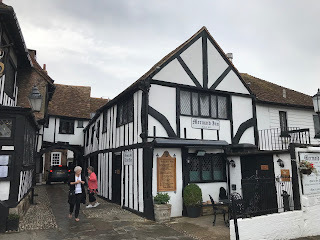
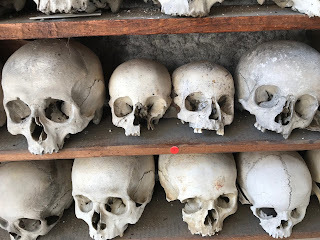
The longest holiday of the year was spent in the south, with trips to places as different as the ossuary at Hythe and the shoreline at Porlock Weir, enjoyed in lovely weather. A fantastic trip, even if I did under-estimate how long it would take to drive from Rye to Torquay...

It also proved possible to host a couple of meals for the Detection Club. We broke with tradition by having a marvellous lunch at Balliol College, Oxford (see the photo close to the top and the pic with Peter Lovesey below), whose Master, Dame Helen Ghosh joined us and gave an impromptu speech. Dinner at the Ritz in October was great fun, as was spending time in the bar with lovely new members Lynne Truss and Chris Fowler (photo above). The dinner also gave me a chance to meet in person Simon Dinsdale, Kevin Durjan, and Giles Ramsey, with whom I've done several weeks of online lecturing on 'the Art of the Whodunit' during the pandemic.
Plenty to celebrate, then, and plenty to remember fondly - many reasons to feel thankful. And I am.

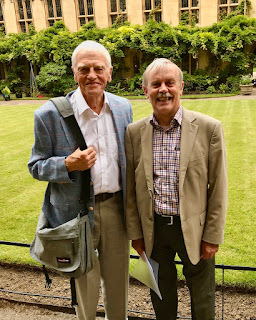

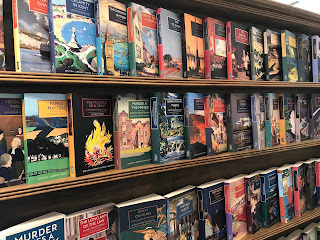
December 27, 2021
Don't Look Now - 1973 film review
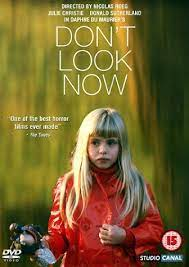
There are a lot of hopeless horror movies around, but there are also several masterpieces. My three all-time favourites are The Wicker Man, Rosemary's Baby and Don't Look Now (Midsommar, which has grown on me, is not too far behind, but I don't think it's quite in the same league, while The Shining didn't impress me quite as much as it did most people). I first watched Don't Look Now in the 70s and the shock ending made a great impact on me. It's an arty film, perhaps too self-consciously so, but a recent viewing confirmed that it hasn't lost its power.
The premise is simple and is based on a short story, rather than a novel, by Daphne du Maurier. Julie Christie and Donald Sutherland play a married couple, the Baxters, whose young daughter dies tragically in a drowning incident. The little girl was wearing a red coat at the time. The couple are deeply affected by their dreadful loss but some time later travel to Venice, where John Baxter is working on an ancient church. In Venice, they meet two elderly sisters, one of whom (superbly played by Hilary Mason) is blind and psychic and claims to be able to see the little girl. Meanwhile, a series of murders is being committed in the city...
The first time I watched the film, I found it quite bewildering. At that time, I'd never visited Venice, which makes a fantastic setting for the story. Venice is gorgeous, but it also has its macabre side, with all those bewildering twists and turns of the alleyways and the ever-present canals. Water is a central theme of the screenplay and the camera work is dazzling.
I've always been a Julie Christie fan and although the casting of Donald Sutherland must have seemed like a gamble, he is terrific too. This is a film that could easily have slipped into pretentiousness, but the performances are so effective that the risk is averted. The result is a haunting gem.
December 24, 2021
Happy Christmas!
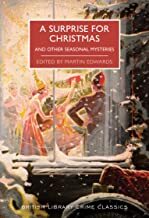
I'd like to wish all readers of this blog a very happy Christmas. As always, your comments and emails have been interesting, informative, and encouraging. It's not been an easy year around the world, in particular because of the pandemic, but the connections I've forged through this blog have been truly rewarding. So thank you, and have a great festive time.
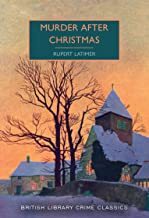
And if you're in the mood for seasonal crime, try Rupert Latimer's Murder after Christmas, a just-published British Library Crime Classic. It's a previously obscure book, and quite unusual in various ways. In the intro, I discuss the author's short and rather unlucky life, but it's good that his book has seen the light of day again. Meanwhile in the US, my anthology A Surprise for Christmas has now been published by Sourcebooks.
December 23, 2021
Forgotten Book - The Marble Forest
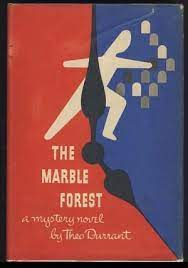
Theo Durrant was a Californian double murderer whose name was used as a pseudonym by members of the northern chapter of the Mystery Writers of America when they wrote a collaborative crime novel. Twelve authors were involved in the writing of The Marble Forest, with the lead taken by Anthony Boucher, the man who gave his name to Bouchercon and who was also a legendary critic and a talented exponent of the classic mystery.
The Marble Forest is a book in the tradition of Detection Club collaborations such as The Floating Admiral, but the plotting is rather tighter than you tend to expect in a novel written by a dozen different people. I understand from Jeffrey Marks' biography of Boucher that Boucher took the lead, writing detailed notes so that each contributor was working to a definite plan.
There is a whodunit element in the novel, but essentially it's a high-tension clock-race story. A doctor is told that his young daughter Midge has been kidnapped and buried in a coffin. He needs to find her before the air supply runs out. As he conducts his search in a dark cemetery - the 'marble forest' of the title- we learn, through a series of flashbacks, about the people who have cause to wish him harm.
This is a pretty good thriller, published in 1951 and filmed seven years later as Macabre. The contributors included some obscure figures and a few who were very highly regarded in their day, including Lenore Glen Offord and Darwin Teilhet. Sadly, Virginia Rath died - in her mid-forties - before publication. I think their interesting, offbeat collective effort deserves to be better known.



